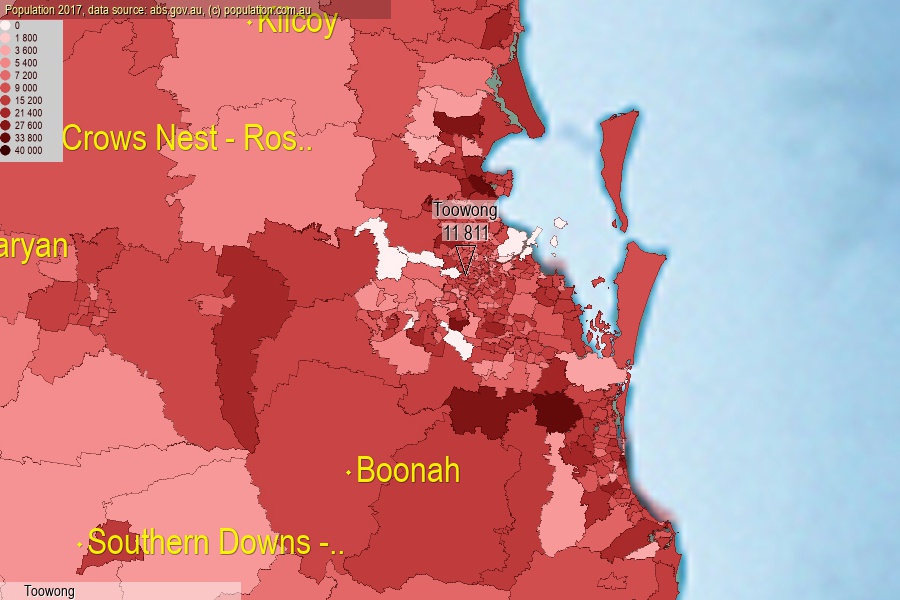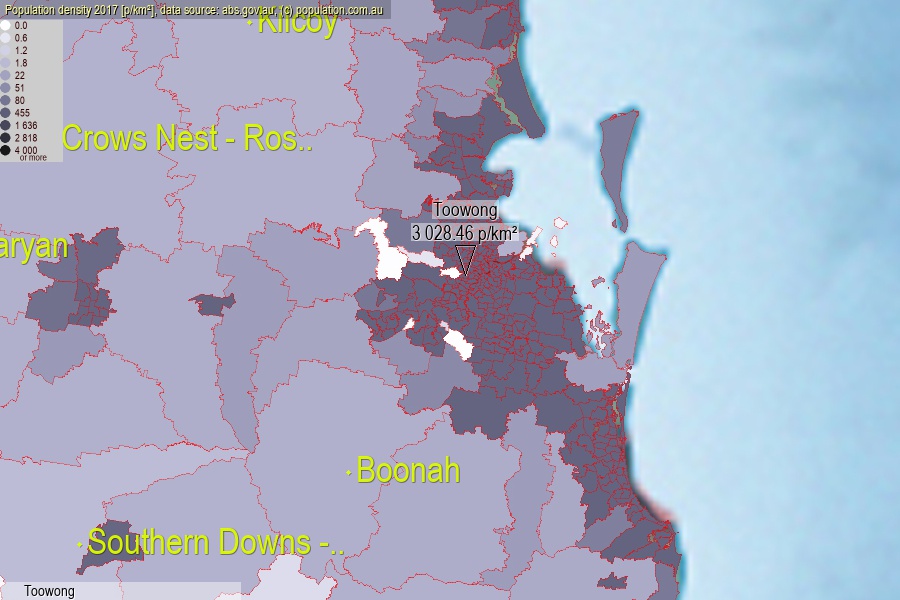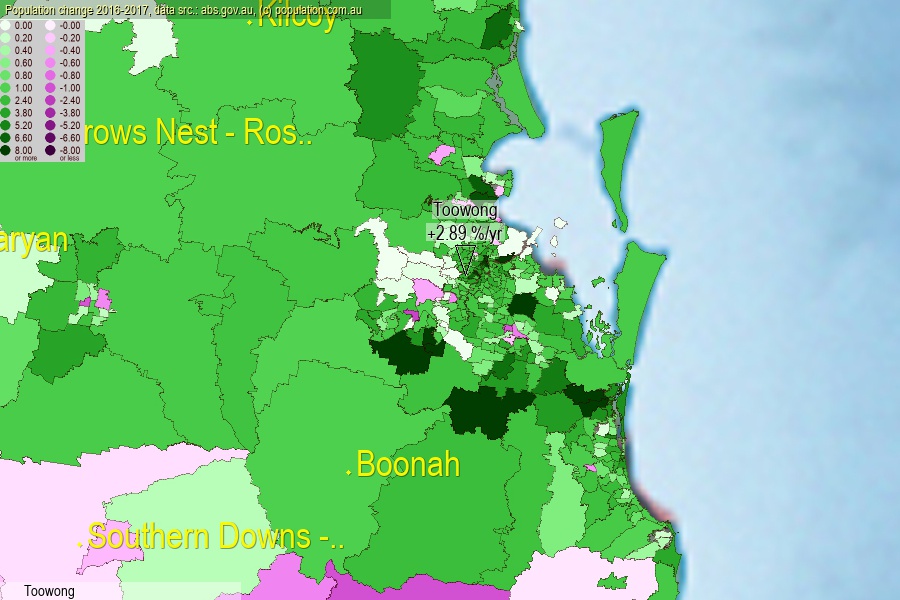 population.com.au
population.com.auLast official estimated population of Toowong (as Statistical Area Level 2) was 11 811 people (on 2017-06-30)[2]. This was 0.05% of total Australian population and 0.237% of QLD population. Area of Toowong is 3.90 km², in this year population density was 3 028.46 p/km² . If population growth rate would be same as in period 2016-2017 (+2.89%/yr), Toowong population in 2025 would be 14 837. [0]



Click to enlarge. Toowong is located in the center of the images.
Population [people], population density [p./km²] and population change [%/year] [2]
View borders » (new window) [4]
[1991-1992] -0.80 %/Yr.
[1992-1993] -0.46 %/Yr.
[1993-1994] +0.36 %/Yr.
[1994-1995] +1.19 %/Yr.
[1995-1996] +4.41 %/Yr.
[1996-1997] +0.23 %/Yr.
[1997-1998] +1.46 %/Yr.
[1998-1999] +0.38 %/Yr.
[1999-2000] +0.18 %/Yr.
[2000-2001] +3.22 %/Yr.
[2001-2002] +3.43 %/Yr.
[2002-2003] +6.82 %/Yr.
[2003-2004] +2.42 %/Yr.
[2004-2005] +2.09 %/Yr.
[2005-2006] +2.16 %/Yr.
[2006-2007] +1.66 %/Yr.
[2007-2008] +1.47 %/Yr.
[2008-2009] +2.10 %/Yr.
[2009-2010] +1.38 %/Yr.
[2010-2011] +1.11 %/Yr.
[2011-2012] +0.08 %/Yr.
[2012-2013] +1.19 %/Yr.
[2013-2014] +0.54 %/Yr.
[2014-2015] -0.08 %/Yr.
[2015-2016] +0.78 %/Yr.
[2016-2017] +2.89 %/Yr.
[0] Calculated with linear interpolation from officially estimated population
[1] Read more about SA2 and Australian Statistical Geography Standard (ASGS) on abs.gov.au
[2] Population data from Australian Bureau of Statistics (Population and density: 2017; change: 2016-2017)
[3] Digital Boundaries: Australian Statistical Geography Standard (ASGS) 2016.
[4] Border coordinates are simplifyed using Ramer-Douglas-Peucker algorithm.